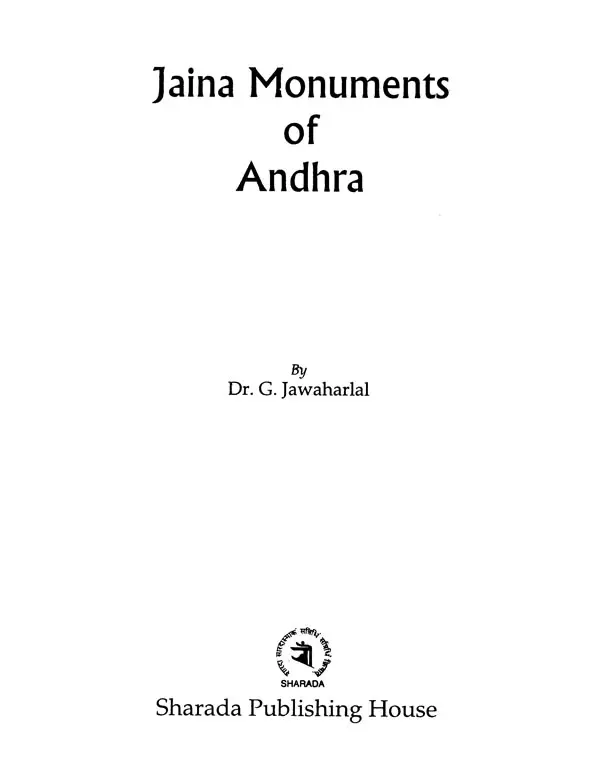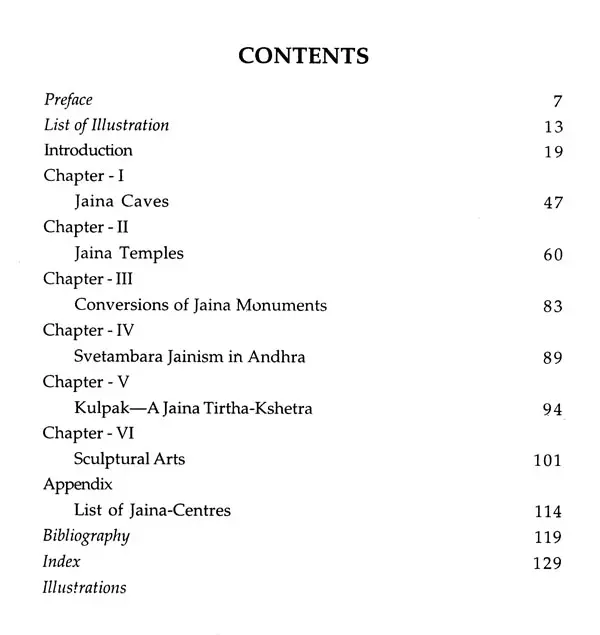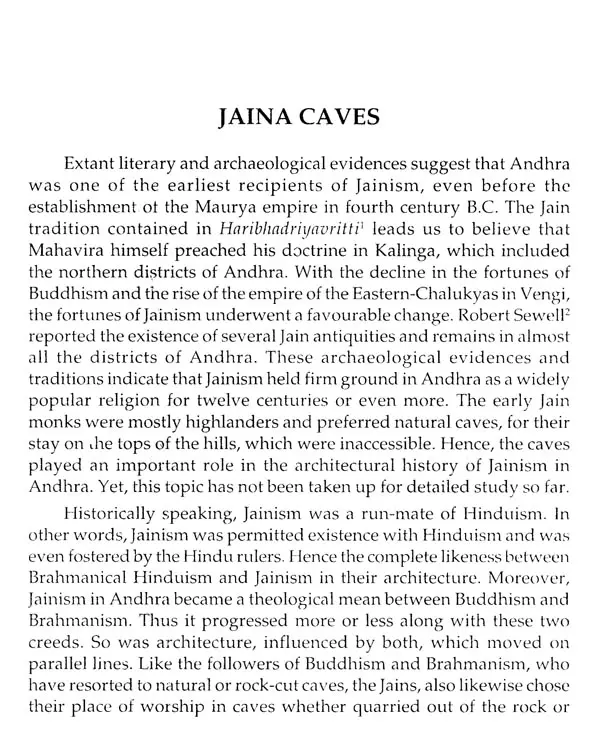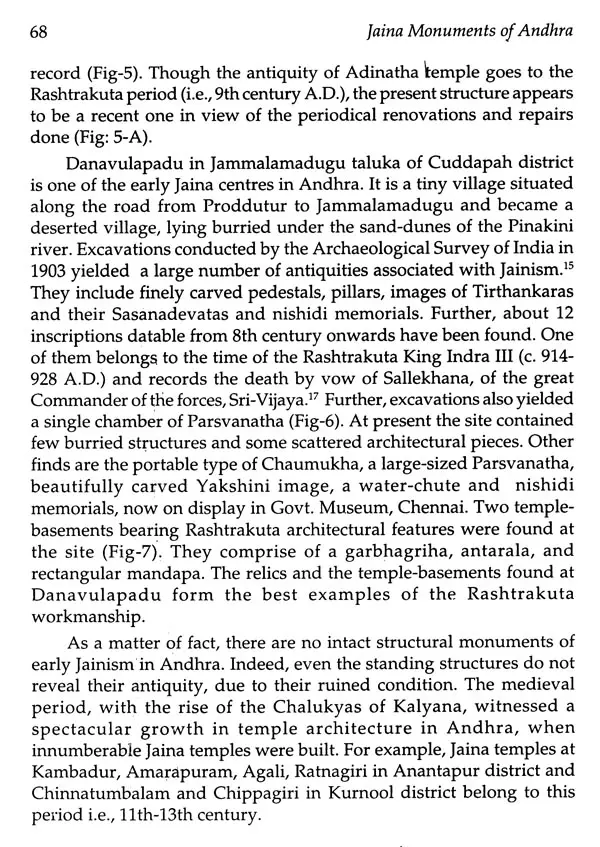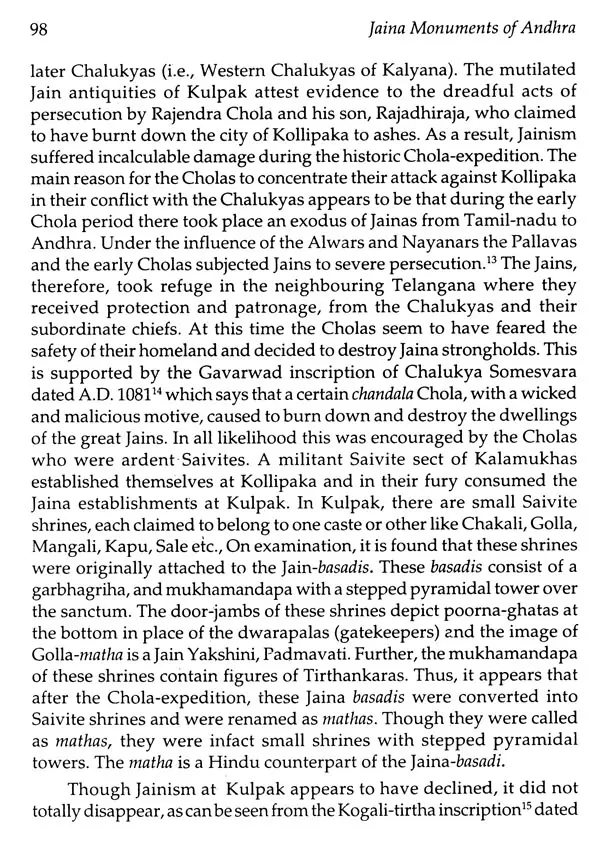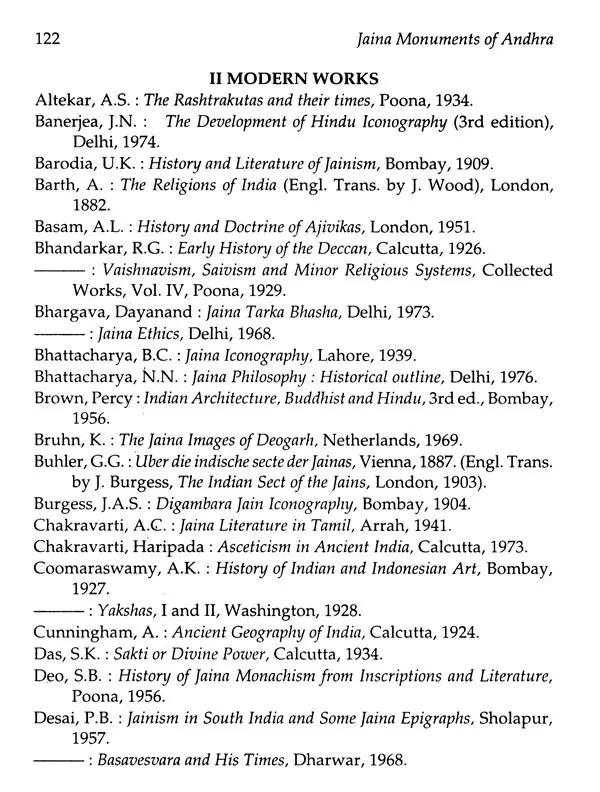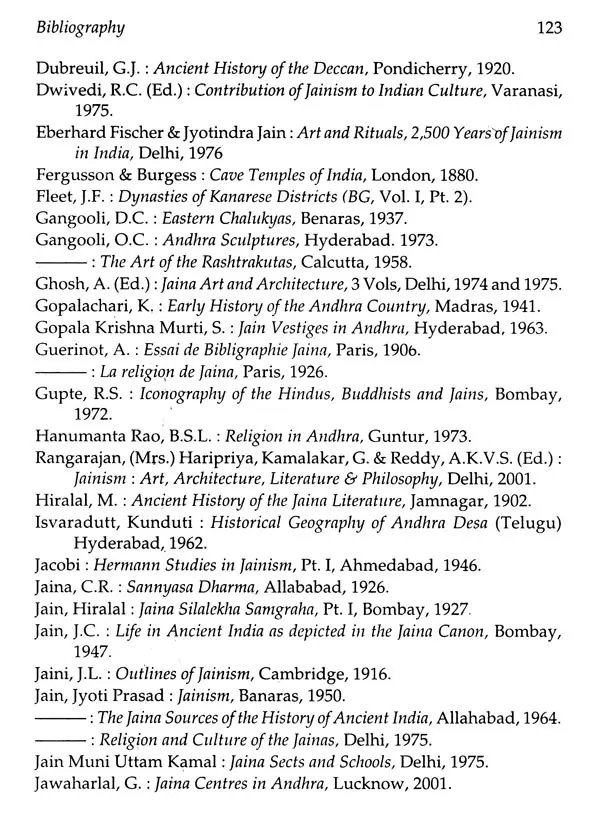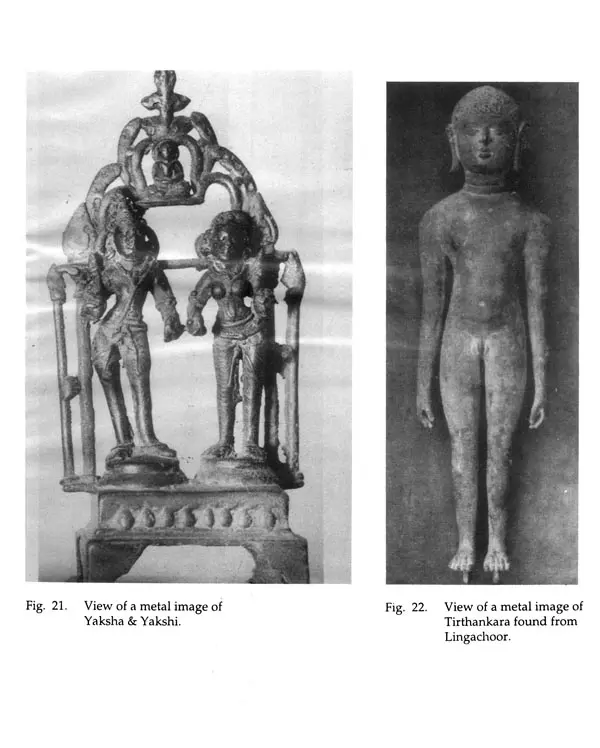
Jaina Monuments of Andhra
Book Specification
| Item Code: | UAF821 |
| Author: | G. Jawahar Lal |
| Publisher: | Sharada Publishing House, Delhi |
| Language: | English |
| Edition: | 2002 |
| ISBN: | 8185616866 |
| Pages: | 192 (Throughout Color Illustrations) |
| Cover: | HARDCOVER |
| Other Details | 10.00 X 7.50 inch |
| Weight | 690 gm |
Book Description
Later on, Buddhism practically vanished from Andhra, while Jainism continued as a living force. According to tradition recorded in the Haribhadriva- Vritti, Mahavira himself preached his doctrine in the regions of Kalinga and Masolia (i.e., modern Machilipatnam in Krishna district): Hence it is commonly believed that the tenets of Jainism, particularly, Ahimsa, were familiar to the people of Andhra even before the gospel of Buddha reached them. Thus, the early prevalence of Jainism in Andhra must have paved way for the popularity of Buddhism in this land in no time. The Jains constitute today a small community in Andhra, but once they commanded great respect among the Andhras. The Jaina Monuments and inscriptions are strong enough to show that Jainism held firm ground in Andhra as a widely popular religion for twelve centuries or even more. Robert Sewell was the first to report the existence of Jaina antiquities and remains in almost all the districts of Andhra. In a word, there is hardly any village in -Andhra that was not touched by Jainism.
Even then, the state of Andhra Pradesh occupies a rather much insignificant position in the long history of Jainism although; its impact was wide spread, like the other heretic faith, i.e., Buddhism. While all aspects of Buddhism in Andhra are well studied and documented, very little is written about Jainism. Scholars like Ramaswami Ayyangar, Saletor, Desai, Deo, Seshagiri Rao, Sivaramamurthy and Soundara Jama Monuments of Anadhra Rajan has written on the history of Jainism in India, but we do not find adequate and comprehensive picture of Jaina faith in Andhra in their works. Recently, few attempts were made here and there and few books have been published dealing with various aspects of Jainism in Andhra. Sri S. Gopalakrishna Murti's Jaina vestiges in Andhra published in 1963, Hyderabad, Dr. B.S.L. Hanumanta Rao's Religion in Andhra published in 1973, Guntur, are the books which have discussed the history of Jainism in Andhra ignoring Art and Architecture and epigraphically material. My recent book, Jainism in Andhra (as depicted in inscriptions) published in 1994, Hyderabad, is the only book, first of its kind, dealing with Jainism comprehensively. Although it is published very recently, it leaves completely Jaina Art and Architecture in Andhra. Thus the available books on Jainism in Andhra do not adequately dwell upon its history in Andhra. Hence an exclusive work on Jaina Monuments of Andhra was a long felt need.
At this juncture, I approached the I.C.H.R, New Delhi with a project, and Jaina Monuments of Andhra. Realizing its importance, they kindly accepted the project and provided financial assistance to me in the year 1991. Thus I am duty bound to acknowledge the debt of gratitude I owe .to the I. C.H.R., New Delhi. With the assistance of I.C.H.R, I have personally visited each and every Jaina-site in Andhra and made a detailed study of the monuments. The whole report is based mainly on the Jaina vestiges at a host of sites in Andhra. The literary as well as epigraphically sources, which have been found to agree with the details of Art and Architecture of the Jaina monuments have been taken and utilized in this work. Accounts from the traditions and Kaifiyats have also been taken into consideration as and when they synchronies with the recorded evidence.
The whole Jainism is centered round these 24 great religious preachers. It is from the word ‘Jaina’; the modern or familiar name of 'JAIN' is derived. These Tirthankaras having become deified occupy high places in the Jain temples as Hindu divinities do in theirs. Ancient relics, inscriptions and traditions indicate that Jainism held firm ground in Andhra as widely popular religion for twelve centuries or even more.
There is no doubt left by the extant literary and archaeological evidences that Andhra was one of the earliest recipients of this religion which was already well-entrenched before the establishment of the Maurya empire in the fourth century B.C. As reported by Robert Sewell, Jainism penetrated into the nook and corner of Andhra. The presence of Jaina monuments and antiquities in every village lying in a deserted or damaged condition speaks abundantly for the powerful and pervasive influence, Jainism had' at one time in those parts of Andhra. Untill now, these have not been properly examined. In a world, this topic has not so far received the attention it deserves. Therefore an attempt is made herein to focus the history of Jainism in Andhra.
Diffusion Although literary sources are strong enough to show the early entry of Jainism in Andhra, no clear and conclusive evidence is available in respect of its diffusion. However, recent archaeological finds tend to support Jaina literature to some extent.
The entry of Jainism in Andhra can safely be placed in 6th century B.C., if we rely on the text Haribhadriuaorita,' which informs that Mahaveera himself preached his faith in the region of Kalinga. It is said in the Avasyakasutm of Haribhadra, that the king of Kalinga at that time, was a friend of Mahaveera's father, Siddhartha. Hence, Mahavira thought that his doctrine would be well received in Kalinga and hence decided to preach it there. We are further informed that Mahaveera left Sravasti, visited Hasthasisa; and then set out for Tosali where from he journeyed to Mosali. According to Scholars the territory of Kalinga comprised the northern districts of present Andhra Pradesh i.e. Srikakulam, Vijayanagaram and Visakha districts. Further, Mosali of the Jain literature is identical with Maisolia of the classical wrtiers situated between the mouths of the rivers Godavari and Krishna i.e. present Machilipatnam in Krishna district, Andhra Pradesh. Though not supported by any recorded evidence, this traditional account suggests that the beginnings of Jainism in Andhra go back to the Pre- Mauryan period i.e. 4th Century B.C. and it might have entered the Andhra country through Kalinga. K.P. Jayaswal basing on the 14th line in the Hathigumpha inscription of Kharvela", believes that Mahavira actually preached his Dharma from the Kumara hill or Udayagiri hill in Kalinga (i.e. the present Orissa) where lie the magnificent Jain Caves of India.
The. early spread of Jainism to South India is confirmed by Bhadrabahu-Chandragupta tradition according to which Bhadrabahu took his royal disciple Chandragupta to Sravana-Belgola in Karnataka State. This implies that the popularity and ascendancy of Jainism in South India must have made Bhadrabahu to lead his royal disciple to I the South. The Ceylonese Chronicle Mahavamsa" records that Jainism was in existence in Ceylon during the 4th century B.C. Another tradition states that Samprathi, the grandson and successor of Asoka, was a great patron of Jainism and he established Jaina monasteries even in the non-Aryan countries like Andhra and Dramila."
Book's Contents and Sample Pages
